Rappel Anchors
Going up results in coming back down and naturally, rappelling is an ever important part of climbing. In addition, many people use rappels that are not involved in technical climbing with some examples being canyoneering, sport rappelling and challenging scrambles. Since rappelling puts your well-being entirely at the mercy of the technical system that you have established, if any point of the system fails you are likely going to be injured (or worse). Rappel accidents occur every year due a wide variety of mostly avoidable scenarios and even experienced climbers fall prey. Lastly, anchor skills for rappells are similar to climb (belay) anchors but do carry a slightly different set of rules. This article is not intended to serve as an instruction manual or a "how to" on rappelling, but is written to give a small analysis of different portions of a rappelling set up. Seek instruction from an experienced climber before attempting anything on your own.
![Nice rappel anchor...]() Nice rappel anchor...
Nice rappel anchor...Commonly Used Anchors
The most crucial portion of any rappel is the anchor. A wide variety of things are used to anchor the rope at the top of a drop, and as long as they are solid/strong they can be used safely to descend. Always analyze what you will be using to anchor the rope, and if you have any doubt about the integrity of your anchor, either back it up yourself or find a different anchor. Here are several of the most common things that people rappel on and a short list of thoughts about them.
Source of Anchor
| Checklist**
| Thoughts |
Tree
| *Is it alive/healthy?
*Is it big enough to hold your weight?
| A big tree is often the best anchor possible.
Make sure it is well-rooted and healthy.
If you think you could push it over, don't hang on it!
|
Boulder/Horn
| *Is it big enough to hold your weight?
*Is there any movement when you shove on it?
*Is it shaped in a way that will hold your anchor onto it?
| Giant boulder often make solid anchor but use lots of
cord to be made redundant. Be positive that it will not
move under weight and that the cord cannot slip over
the top of the rock.
|
Bolts/Pitons
| *Are they modern gear or old star drives?
*Do they spin? Can they be tightened?
*Are there more than one? If not, is there something else to use as well?
| Bolts can be bomber and easy to equalize but keep a sharp
eye for bad bolts. Old bolt can sometimes be pulled by hand and
should not be trusted. Also, trusting a single bolt it usually a bad idea.
|
Fixed Gear (or knots)
| *Is it current gear or has it been fixed for a long time?
*Was it used in an emergency situation? If so there may be another option.
*Is it properly placed/equalized?
*Is it placed in SOLID rock?
| Often times gear is only left in emergency situations or used to backup
existing questionable anchors. Be leery of any fixed gear and look to see
if it is even necessary (aka is there another way?).
|
Slung Constrictions
| *Is the constriction actually solid?
*Is it thick enough to be trustworthy?
*Is there any way that side or portion of the constriction could shift?
| Chockstones and constrictions between boulders can make good anchors,
but be absolutely positive that no portion of the rock could shift causing the
anchor to fail.
|
**Climbers often become complacent when using pre-exisiting anchors. Just because someone else trusted it does not mean that you should.
**Also, always be very critical and thorough when inspecting and trusting pre-existing cord and webbing. It's easy to place new cord.
Photos taken from the internet...
Soft Goods aka Webbing/Cord
Once a proper source of an anchor is found, you must create a way to attach the rope to it. Unless the anchor is a set of good bolts with rings (don't rappel directly off a bolt!), climbers will most often tie off or equalize with a length of tubular webbing or accessory cord. Here is a short list of different types of cord and a comparison of breaking strength and a few pros/cons.
| Material | Diameter/Width**
| Breaking Strength
| Pros | Cons
|
Accessory Cord
| 6mm
| 6.8KN - 1,529lbs
| Very standard material and easy to use.
Strong and holds well against abrasion.
Works for repeated use.
| Heavy/bulky to carry.
|
Webbing
| 9/16" - 14.3mm
| 9KN - 2,023lbs
| Lighter than most cord. Slightly cheaper.
Also very strong material.
| Doesn't hold up to abrasion as well as cord.
Knots must be perfectly dressed (flat).
|
The Rope
| 9.5mm | ≈26KN - 6,000lbs
| Strongest option.
| Having to sacrifice a portion of your rope would be
an absolutely last resort and would only be resorted to
in a dire situation.
|
Nothing at all.
(i.e. the rope wrapped around a tree)
| NA
| Depends on anchor.
| Doesn't require any extra gear.
| VERY easy to get the rope stuck due to friction.
|
**Diameters and widths can vary widely and many people use different things. I chose the one that I most often use to be able to include breaking strengths.
 Webbing!
Webbing!
| 
Accessory Cord!
|
Knots
It's critical that your cord is tied in a way that it will not come undone under weight. The knot that you use is what holds the system together and should be looked at carefully. Here are a few of the most common knots used in rappelling.
Material
| Knot
| Knot Strength**
| Pros
| Cons
|
Webbing
| Water Knot
| 75%
| Easy to tie. Strong.
| Must lay flat and be well dressed for most strength.
Leave at least 2" tails to prevent slipping and knot failure.
|
Flat Overhand
| 60%
| Easy to tie.
| Must lay flat. Knot can roll under heavy loads if not properly dressed.
Best to tie two knots next to each other and leave at least 6" tails.
|
Accessory Cord
| Double Fishermans
| 79%
| Very strong.
| Can be tricky to tie correctly without practice.
Nearly impossible to untie if heavily weighted.
|
Flat Overhand
| 60%
| Easy to tie.
| Must lay flat. Knot can roll under heavy loads if not properly dressed.
Best to tie two knots next to each other and leave at least 6" tails.
|
Flemish Bend
| 81%
| Familiar knot to all climbers.
Very strong.
| None.
|
**Very, very approximate. Taken from info on the internet found
HERE and
HERE. This is added more for interest than anything. All of these knots will hold your weight if
tied correctly.
SERENE - What does it mean?
S-Strong, E-Equalized, R-Redundant, E-Efficient, NE-Non-extending.
This acronym is often taught to help people remember the foundations of a solid climbing anchor. This is a good saying, and there is no doubt that every aspect mentioned is tremendously important. That said, rappel anchors can slightly alter the framework of SERENE while still creating a strong and safe anchor. Here is a slight detail on each element of the acronym, and ideally you should be able to answer yes to every question listed...
Strong:
| *Are the points of your anchor strong and trustworthy?
*Will the individual parts hold your weight?
|
Equalized:
| *Is it rigged in a way that each portion of the anchor shares the load equally?
*Is it equalized with the anticipated direction of load in mind?
|
Redundant:
| *If any one point fails, is there another portion that will serve as a backup?
|
Efficient:
| *Have you utilized your materials (cord or pro) in a way that is safe, yet has not wasted any?
|
Non-extending:
| *If one point fails, will the master-point stay in one place without dropping?
*Have you tied it in a way to facilitate a non-moving masterpoint? (i.e. no "sliding X")
|
Although it is recommended, climbers often tie off an anchor source (i.e. tree) with a single loop of non-redundant cord. There is a wide variety of reason why climbers do not make their rappel anchors redundant, these reasons include wanting to save cord, trusting pre-existing cord, laziness, or a belief that it is simply not needed for a rappel anchor. Although creating a redundancy will undoubtedly create another level of safety (unless the whole anchor fails), a competent climber can safely descend on a strong, non-redundant anchor. Also, slinging a large boulder takes a lot of cord and it may be unrealistic to create an anchor that is redundant while still being efficient. With an undoubtedly solid anchor like a large tree or giant boulder and a new piece of cord, it is not necessary to equalize it with another anchor source nor is it necessary to make it redundant. Double check every aspect of your anchor (especially the knots that tie your cord together), and if there is any doubt of its integrity, add another loop of cord to cause redundancy or find something else to use to create equalization. If you find yourself creating an anchor out of something that is slightly weaker, attempt to find something to use to equalize and share the load. Once again, seek qualified instruction before attempting this.
 Two bolts demonstrating SERENE properties.
Two bolts demonstrating SERENE properties.
If it looks like a mess then it probably is!
As a habit, always treat established anchors as suspect regardless of what they are made out of. Even "bomber" bolts and chain anchors can develop dangerous grooves in them and anything that is a "soft good" (i.e. webbing and cord) is at the mercy of the weather. Fortunately, many anchors as easy to inspect and assess the overall condition. A quick twist of a bolt will show if it spins and a flip of a maillon or carabiner will show any grooves. If you come across an anchor that has so many slings or wads of cord that it is impossible to tell what is going on, you should consider cutting it apart and making a new one. Usually if it looks like a mess, it probably is and the parties before you may not have set up a safe anchor. Just because it has held in the past, doesn't mean that it will hold you. Several accidents happen every year when pre-existing anchors fail and these incidents could easily be avoided by placing your own gear.
![Ship Rock]() Nasty old bolts and a mess of crap. Looks bad and likely is bad. I wouldn't want to find out.
Nasty old bolts and a mess of crap. Looks bad and likely is bad. I wouldn't want to find out.
| ![The Oracle, Fisher Towers]() A mess of muddy, old webbing and spinning bolts. Is it equalized? Who knows! We backed it up with the purple cord.
A mess of muddy, old webbing and spinning bolts. Is it equalized? Who knows! We backed it up with the purple cord.
|
![Constriction Anchor]() A series of questionable constrictions as an anchor. The one on the right is seemingly solid, but the left two???? Could have been equalized much better.
A series of questionable constrictions as an anchor. The one on the right is seemingly solid, but the left two???? Could have been equalized much better.
| ![Ship Rock]() Single bolt placed in a small boulder sitting on a sloping ledge. The "backup" cord is simply a mess of crap looped around the same boulder. The boulder vibrated when you pounded your hand against it. Unfortunately, this anchor had no other alternative. Would you trust it?
Single bolt placed in a small boulder sitting on a sloping ledge. The "backup" cord is simply a mess of crap looped around the same boulder. The boulder vibrated when you pounded your hand against it. Unfortunately, this anchor had no other alternative. Would you trust it?
|
![Pawnee Buttes]() This is perfectly equalized, but each piece is garbage. No good.
This is perfectly equalized, but each piece is garbage. No good.
| ![Mexican Hat]() Single piton "anchor" for your belayer. This is a good example of something that would be good to backup.
Single piton "anchor" for your belayer. This is a good example of something that would be good to backup.
|
![Yer gonna die!]() Ancient single bolt rappel anchor with an old maillon-type iron ring.
Ancient single bolt rappel anchor with an old maillon-type iron ring.
DON'T TRUST THIS!
| ![Suspect gear? Equalize!]() Good thing there are a lot of bad bolts to equalize them all. Still a bad anchor.
Good thing there are a lot of bad bolts to equalize them all. Still a bad anchor.
|
![Notchtop]() This looks good at first, until you see that all 3 pieces are old rusted pins. Hmmm.
This looks good at first, until you see that all 3 pieces are old rusted pins. Hmmm.
| ![The Titan]() A nice reminder that bolts don't always equal bomber.
A nice reminder that bolts don't always equal bomber.
|
![Bomber]() 2 new bolts in good rock close enough to equalize with maillons. BOMBER! Nice change of pace from the other junk.
2 new bolts in good rock close enough to equalize with maillons. BOMBER! Nice change of pace from the other junk.
|
Ring or Not to Ring
Often a member of a climber's rack, rappel rings are considered by many to be a critical portion of a rappel anchor. They serve the purpose of providing a solid point of entry and exit for the rope, and are strong and abrasion resistant. The allow anchors to become safe to use for several parties, as pulling the rope through the cord can burn through it completely, or worse, cause damage invisibly. Rings also offer much less resistance for pulling the rope and help decrease your chance of stuck ropes. That said, safe rappels are possible without using rings and many parties chose to forgo their use. Here is a brief look at popular rappel rings.
Remember, ALWAYS back up a pre-existing anchor that does not have a ring as the previous party's rope pulled will have damaged it.
Type of Ring
| Breaking Strength
| Weight
| Cost** | Pros
| Cons |
No ring at all.
| Same as cord used.
| NA
| NA
| You don't have to carry anything extra.
| One use only as pulling ropes damages cord.
|
![]() SMC "Descending" Ring SMC "Descending" Ring | 14KN - 3,147lbs
| 11g - 0.39oz
| $3.10 | Lightest of the ring options. Cheap.
| Makes people uncomfortable as they "look weak".
Repeated use will saw through them.
|
OP Rap Ring
| 20KN - 4,496lbs
| 34g - 1.2oz
| $4.75 | Looks burly and is strong.
Can be used more than once.
| Heavy and more expensive than other options.
|
SMC "Rigging" Ring
| 32KN - 7,194lbs
| 26g - 0.92oz
| $4.50 | Strongest of the ring options and not the heaviest.
Slightly cheaper than the Omega Pacific.
| Still heavier than nothing or the thinner ring.
Not every store carries them.
|
3/8" Maillon aka Quicklink***
| 9.7KN - 2,200lbs | 113g - 4oz | $3.23
| Can be purchased at all hardware stores.
Comes is different sizes. Can be very durable. Cheap.
| Not all maillons are created equal, some are weaker.
Heaviest of the options.
|
Carabiner (oval wiregate)
| 23KN - 5,170lbs
| 45g - 1.59oz
| $6.95
| You always have carabiners with you on a climb.
Strong as long as gate stays closed.
| A bit more expensive. Gate could open during rappel.
Tape the gate or use two to help prevent this.
|
**Using REI to get cost. Other retailers often sell these for less money.
***I chose 3/8ths as it's a common size to use. Not all are strong enough to use so make sure to check the ratings stamped on the side of the maillon.
Don't be complacent!
Always careful inspect rappel anchors no matter how they appear at first glance. Don't assume that all anchors on a popular climb are safe just because lots of people use them. Not all bolts are bomber and not all trees will hold your weight. The price of anchor failure on a rappel can be lethal, so always backup or find an alternate descent instead of trusting a sketchy anchor.
![Grooved Carabiners]() Watch for grooves!
Watch for grooves!
|  Damaged top-rope anchor.
Damaged top-rope anchor.
|
![SMS Thin Ring Damage]() This damages occurs after repeated use or lowering.
This damages occurs after repeated use or lowering.
|  From the ASCA
From the ASCA
|
![The Sword of Damocles]() Bolts are not always bomber.
Bolts are not always bomber.
| ![American Death Triangle]() American Death Triangle. This multiplies the force on each piece.
American Death Triangle. This multiplies the force on each piece.
Photo by Exitableboy.
|
![undefined]() Yikes! Photo by Dow Williams.
Yikes! Photo by Dow Williams.
| ![The Oracle, Fisher Towers]() Replace that cord!
Replace that cord!
|
Specialty Anchors (Canyoneering)
Once enough experience is gained, a competent and experienced rappel can make many things work. A rappel anchor only has to be strong enough to hold your weight and specialty "anchors" are often made and used. The place that these most often are seen is canyoneering, where the choice of solid anchors often doesn't exist or a copious amount of webbing may be required. Canyoneers pride themselves on being able to descend on seemingly impossible anchors and also use clever ways to leave nothing behind in a canyon. I will leave these specialty anchors for somebody else to address as the intention of this article is geared toward basic anchors that are commonly seen. Here are a few photos of canyoneering anchors, and as always, don't try this unless trained by an experienced person...
Here is an article on retrievable anchors written by Scott P... https://www.summitpost.org/retreivable-rappel-anchor/172233
Conclusion
Hopefully this serves as a brief reflection on standard rappel anchors and a small look into the fundamental portions of each anchor. Rappelling is often a relaxing portion of a climb but is still a place to keep up your guard. As mentioned in the beginning of this article, always seek instruction from a qualified instructor before attempting anything discussed. I am not an expert and nobody should listen to anything that I say.
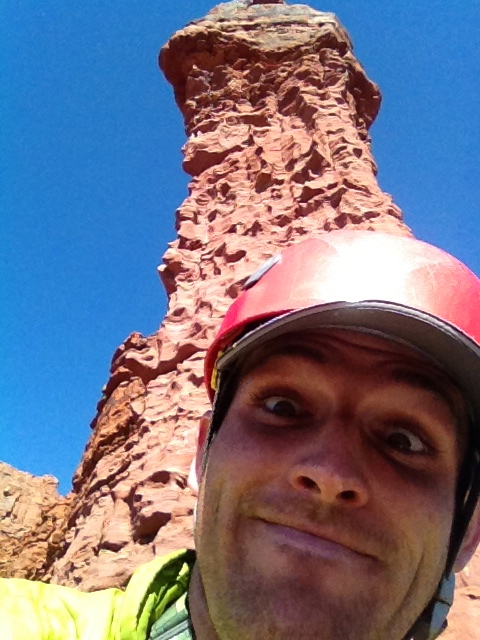 Duh! Don't trust this guy!
Duh! Don't trust this guy!
Climb on!


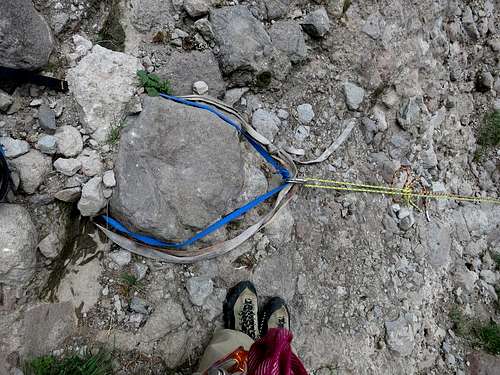

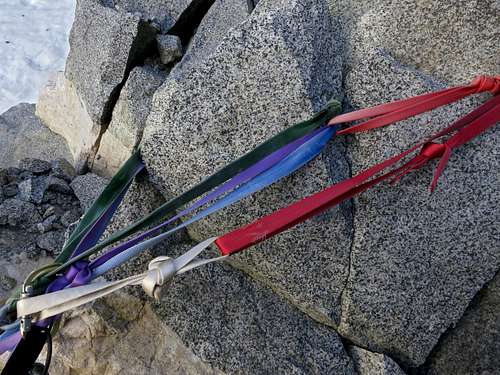


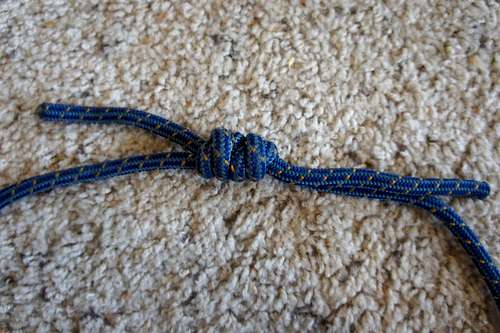
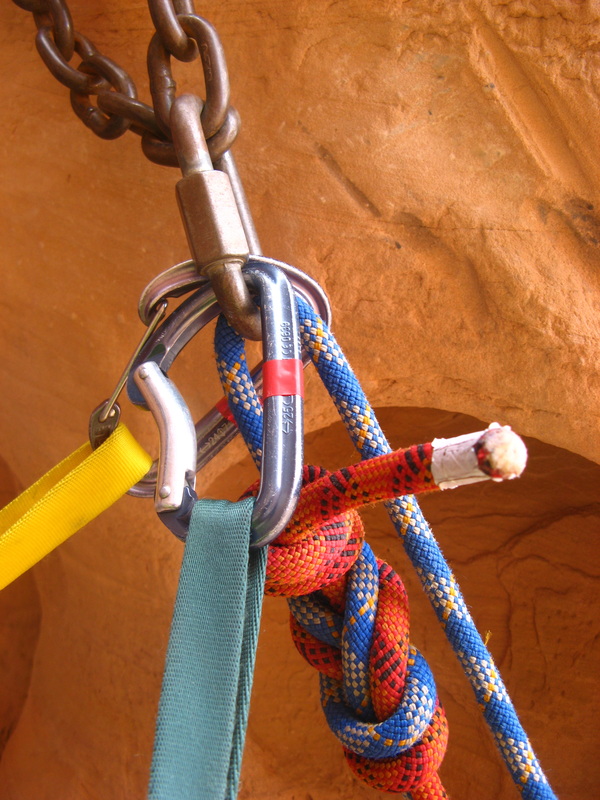
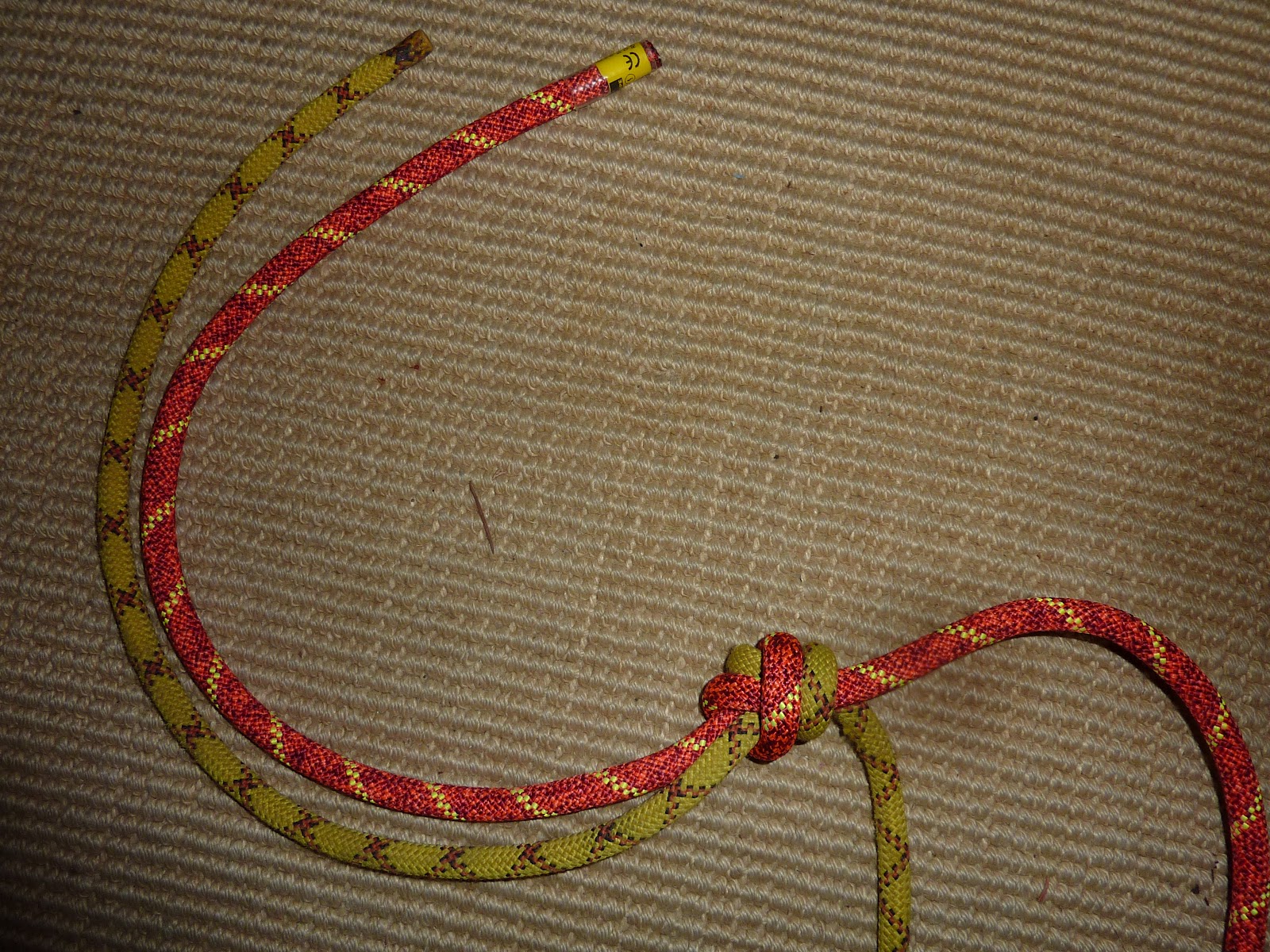


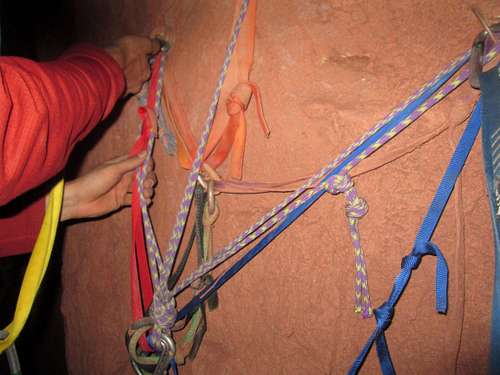

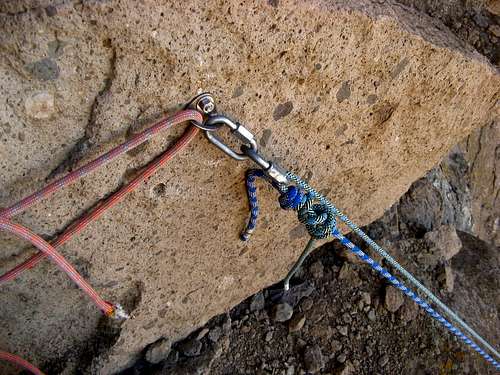
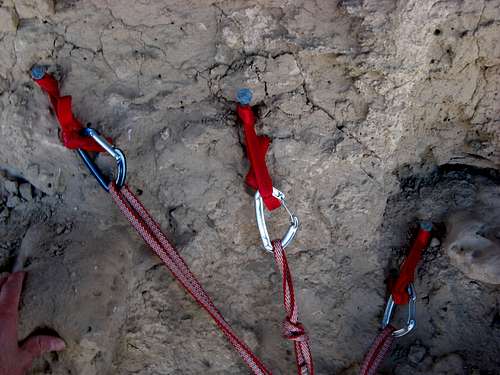

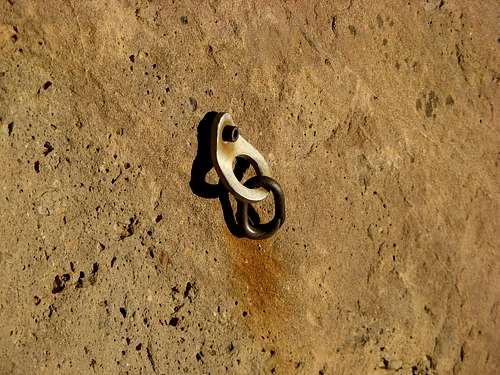
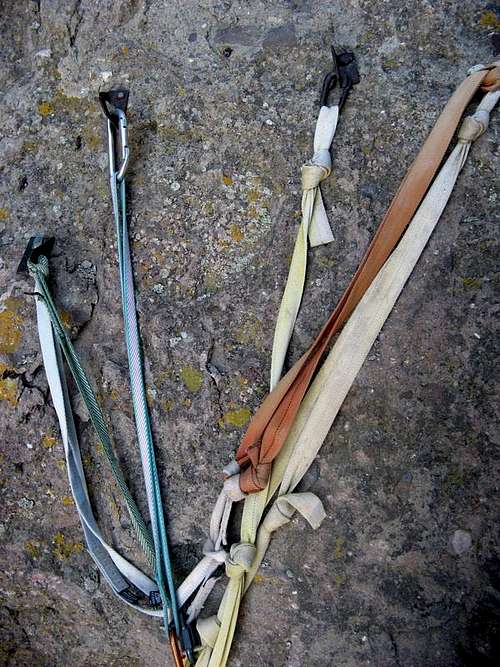

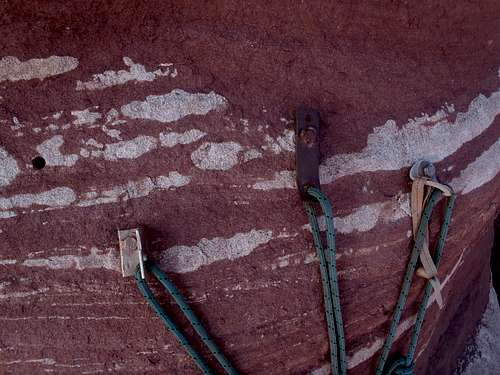
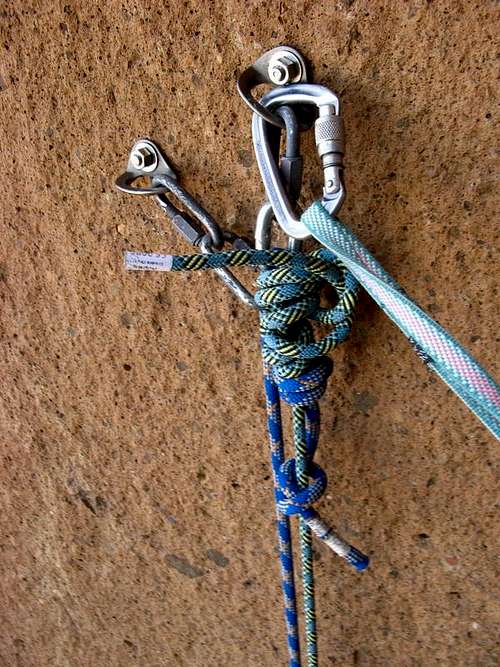

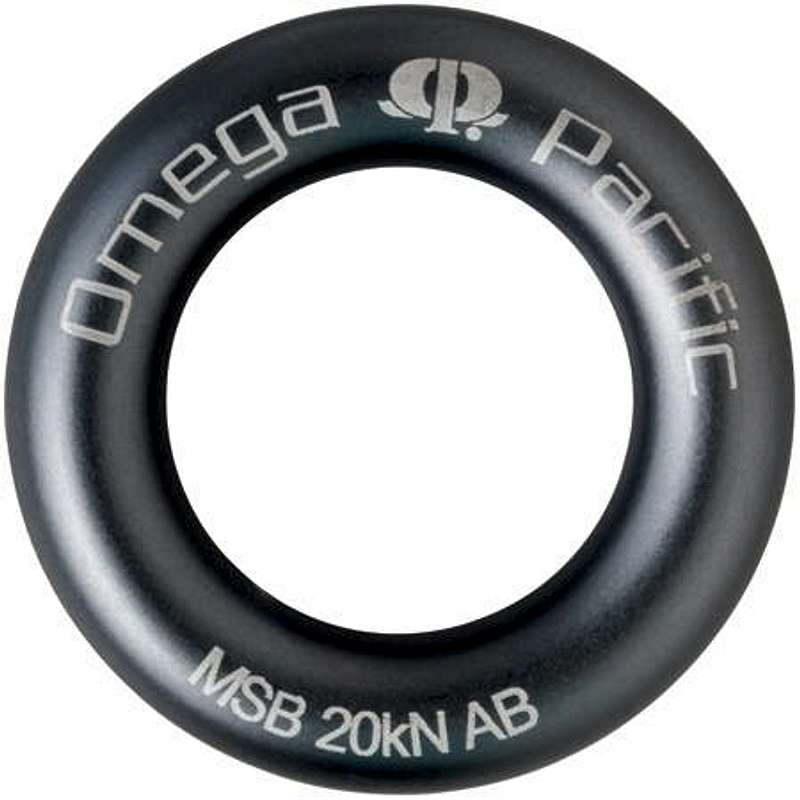
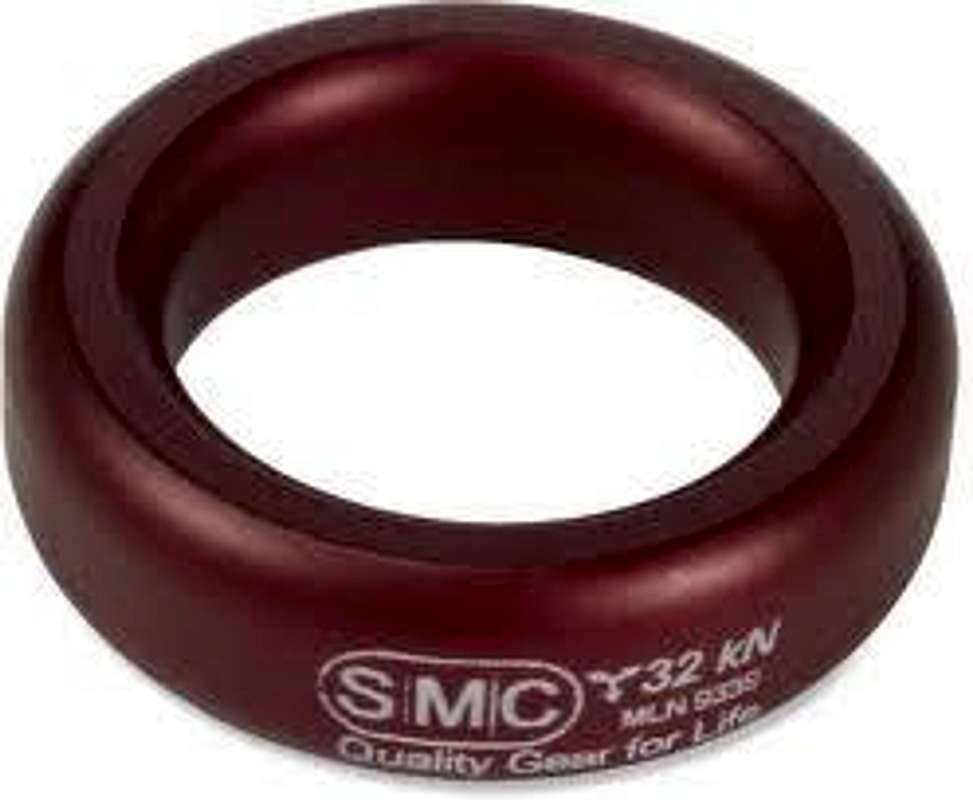

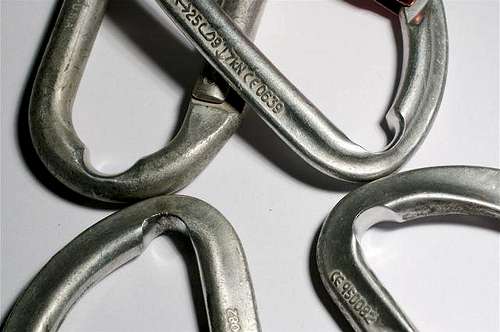

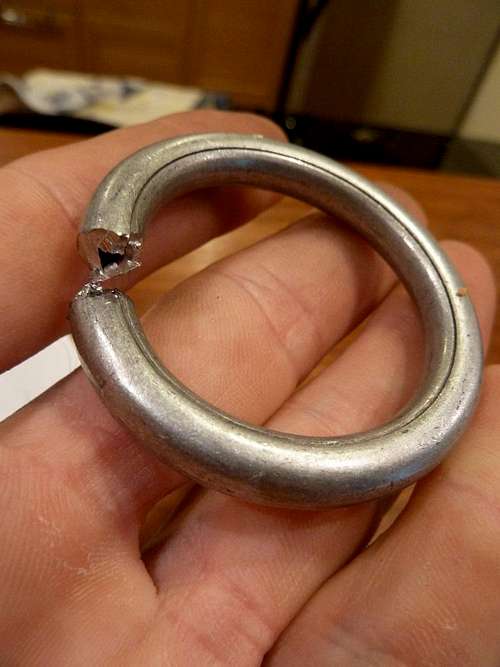

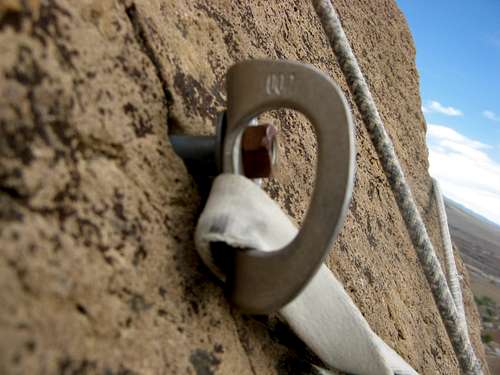
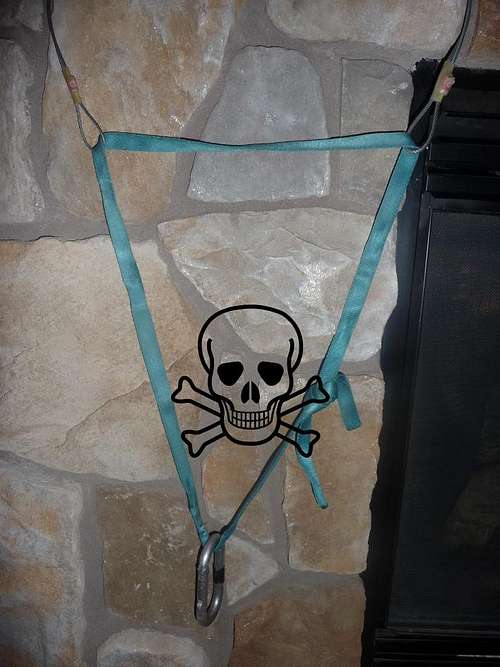
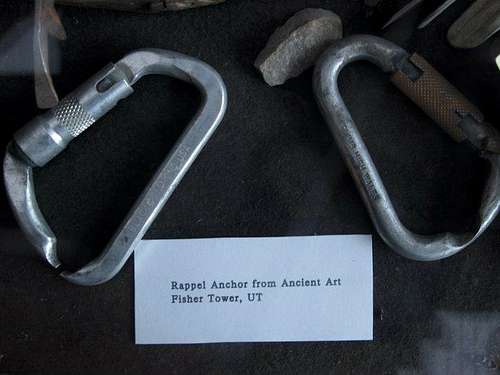
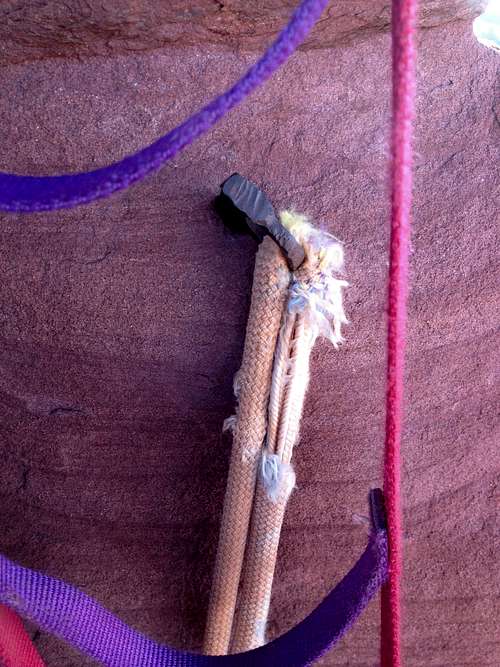

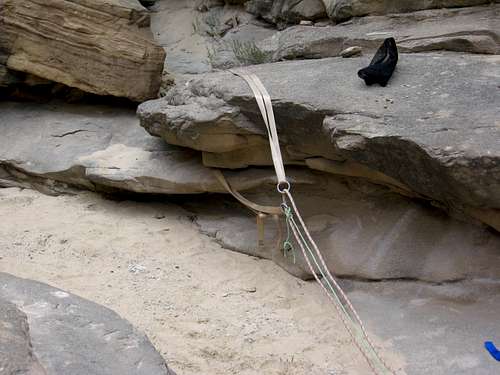
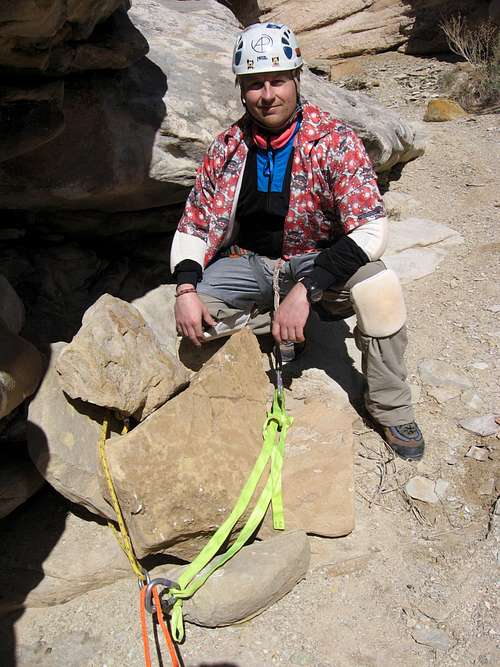
















Comments
Post a Comment